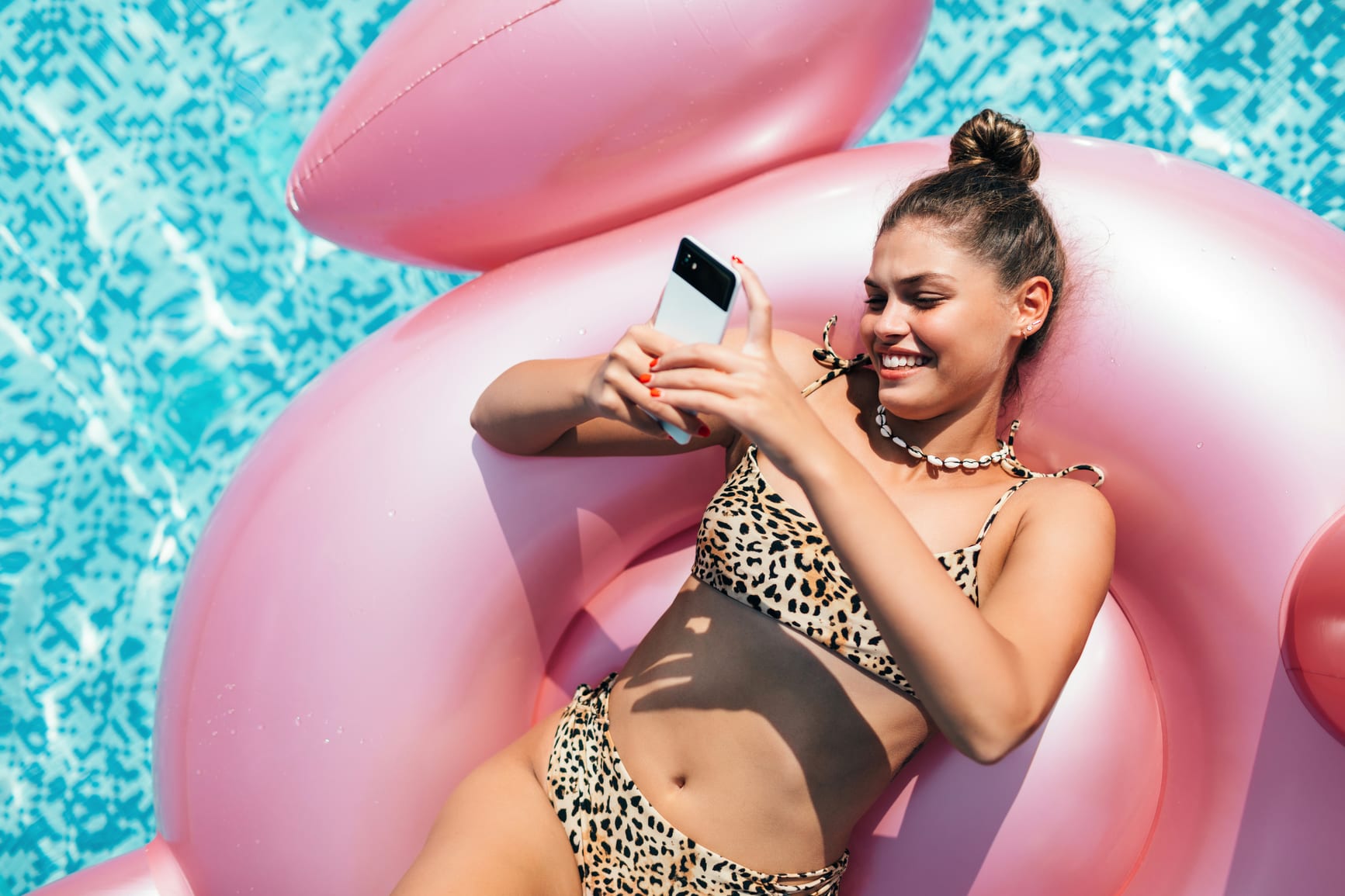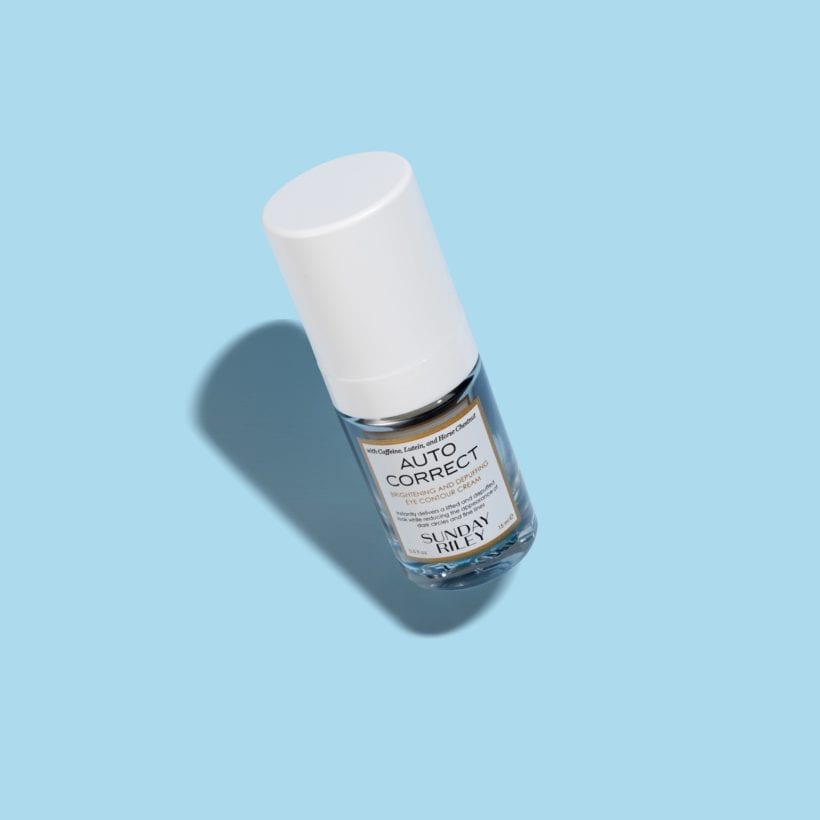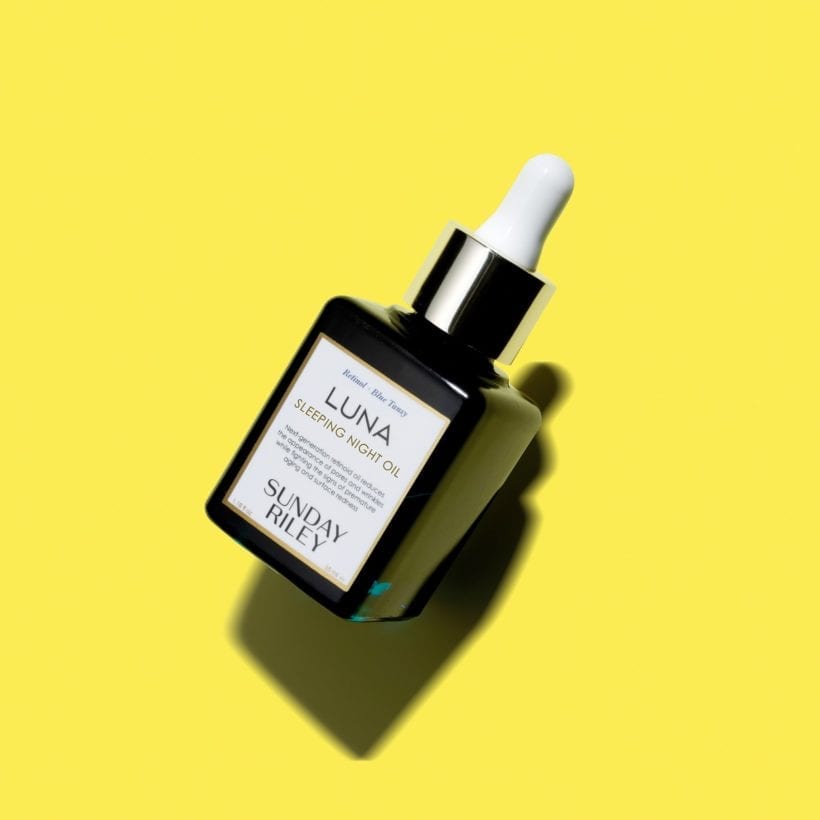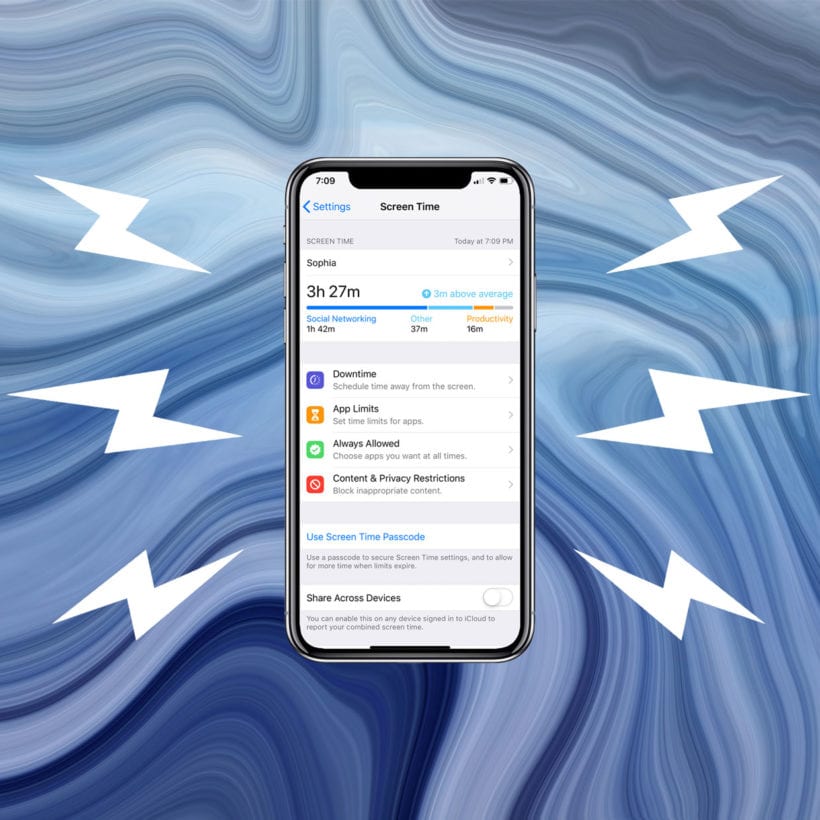What’s the first thing you check in the morning and the last thing you’re scrolling through at night? Yep, we bet that would be your phone. And during the hours in between, we guarantee screen time has gone way up since the pandemic, whether you’re working from home or Zoom-ing along with your kid during their homeschooling.
While most of our blue light (a.k.a. High Energy Visible light — the short-wavelength light that’s visible to the naked human eye) exposure is from the sun, blue light is also emitted from our daily devices like our phone screens and television. “It is higher in energy than colors with relatively long wavelengths, like yellow or red,” explains Phillip Yuhas, OD, Ph.D. and assistant professor at the Ohio State University College of Optometry.
The blue light affects us in three major ways:
Skin damage
In terms of skincare, it’s more complicated than saying blue light is “bad” (after all, it’s shown to be effective in treating certain types of acne) and more research needs to be done to fully understand blue light’s effect on your skin. But what we know so far is that because of its ability to penetrate deeply into your skin, even short stints of screen time can create oxidative stress that could result in wrinkles and premature aging. A new study shows that repeated and prolonged exposure to high-energy blue light can increase the amount of DNA damage, cell and tissue death and injury, skin barrier damage, and photoaging.
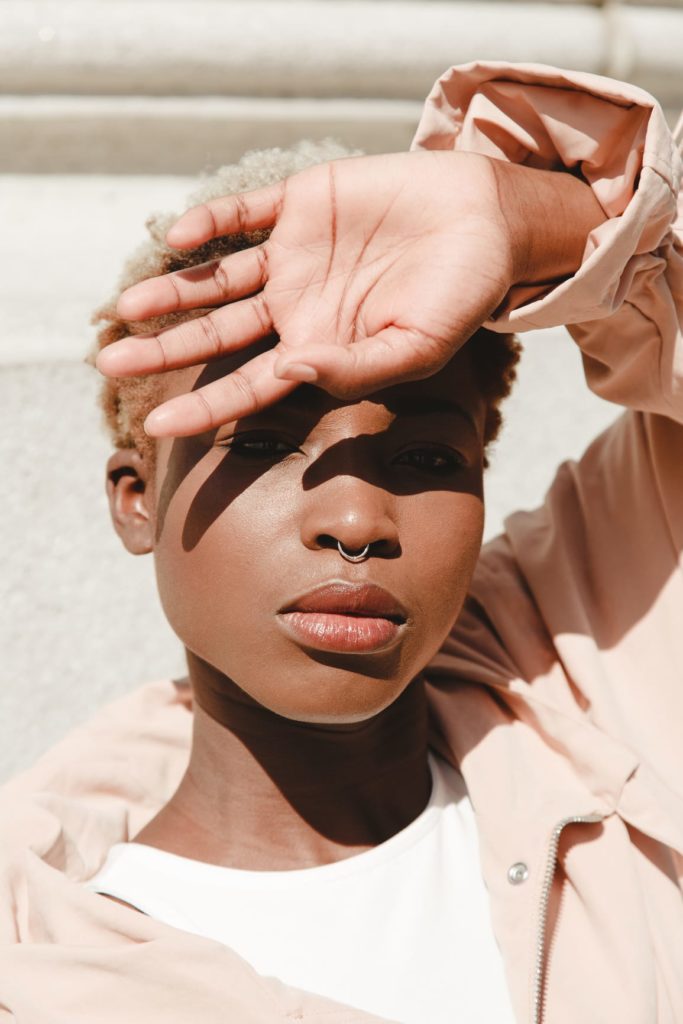
Blue light specifically “has been shown to increase brown spots and hyperpigmentation,” says Stacey Steinmetz, cosmetic biochemist and creator of StimuNail. The experiment in a study from 2010 tested both UV light and blue light on the lower backs of 22 participants over the course of two weeks using the same amount of light that you can easily receive from a normal day of sun exposure. Participants ranged from lighter skin to darker skin, and interestingly showed that hyperpigmentation was not only caused by both types of light, but blue light-induced hyperpigmentation reacted and looked differently than UVA light-based hyperpigmentation. The UVA-induced discoloration for darker-skinned participants faded after a day, whereas the blue light-induced hyperpigmentation lasted for the full duration of the two-week study. Those with lighter skin weren’t affected by hyperpigmentation caused by blue light, which goes to show that we still have some more digging to do.
When you consider all the studies together though, you may have a cause for concern, especially if you have a weakened skin barrier or you’re already prone to hyperpigmentation or melasma. It’s not easy to reduce screen time when our livelihoods force us to be virtually connected, but luckily there are ways where a smart skincare regimen can help. Once again, sunscreen comes to our defense: a broad-spectrum sunscreen is a key to protecting against photo-aging since you don’t need to be outside to be exposed to High Energy Visible (HEV) light. You should be looking for Xanthophyll, also known as lutein, in the ingredient list (it can be found in sunscreens like the new Sunday Riley Light Hearted Broad Spectrum SPF 30 Sunscreen). Lutein has been shown to successfully block blue light from penetrating the skin’s layers and prevent free radical damage that can be caused by blue light. It’s a deep yellow antioxidant derived from marigolds. This plant-based antioxidant contains carotenoid pigments which are generally the yellow/orange and red color that plants, vegetables, flowers and fruits produce to repel the sun’s damaging rays. Experts believe that oxidative stress that causes your skin barrier to break down can be combated with a healthy dose of antioxidants. Lutein is heavily produced in nature because it’s how plants and animals protect themselves from ultraviolet light. You can also find the superstar ingredient in Sunday Riley Autocorrect Eye Cream to support and refresh the delicate eye area.
At night, you don’t necessarily need to be wearing your SPF, but you can create an invisible shield for your face to encourage your skin’s natural cell regeneration process while you sleep. “Use an antioxidant- or retinol-based product in the evening to repair and restore,” Steinmetz recommends. The retinol-packed Sunday Riley Luna Sleeping Night Oil repairs the impact blue light has on your face, so you’re protected both night and day.
Eye strain
Eye strain is often associated with blue light — even resulting in multi-million dollar industry for blue light glasses, which experts say are just a gimmick. So what about the tired feeling our eyes can get after being on devices? Two reasons, says Yuhas. “First, the eyes are forced to work together as a team when viewing a screen and this coordination takes effort, which can cause eyestrain.” The second reason is that you blink less when staring at a screen. “The blink rate drops in half, which can cause your tears to evaporate and your ocular surface to dry out,” explains Yuhas. And that dryness can lead to a tired feeling.
Eye strain is more about the close proximity and the length of time we’re using our digital devices, not the screens themselves. If you know there’s a long screen session ahead, use high-quality lubricating eye drops. The best thing to do is to take a short break from your devices every 20 minutes. “These breaks allow the eyes to relax and allow blinks to restore tears on the ocular surface,” says Yuhas.
Disrupted sleep

We’ve all heard the familiar tune that late-night sessions scrolling through social media on your phone can be disruptive for your sleep cycle. Blue light stimulates alertness, which is great when you need to power through a workday presentation — not such good news for when you’re trying to sleep. Dim the screen before bedtime, or better yet, try to avoid screen time for at least 30 minutes before bed.
And, now that you’re done reading this, go ahead and take a break from your screens. Your skin deserves it.
With additional reporting by Christa Lee.
